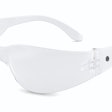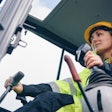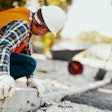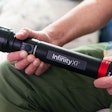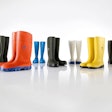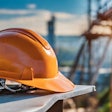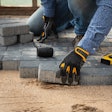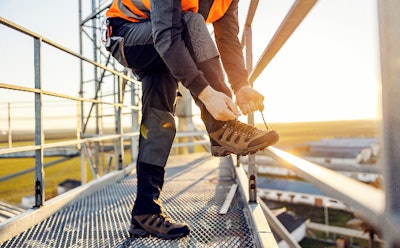
According to the National Institute for Occupational Safety and Health (NIOSH), slips, trips, and falls (STFs) are the third most common type of non-fatal work-related injuries in the United States. Injuries from STFs often lead to time off the job for workers.
Can wearing slip resistant shoes help reduce such injuries?
The Need for Slip Resistant Shoes on Construction Sites
The U.S. Department of Labor Bureau of Labor Statistics report on National Census of Fatal Occupational Injuries indicated work-related fatalities due to falls, slips and trips increased 5.6 percent in 2021, from 805 fatalities in 2020 to 850 in 2021.
Falls, slips and trips in construction and extraction occupations accounted for 370 of these fatalities in 2021, an increase of 7.2 percent from 2020 when there were 345 fatalities, the BLS notes.
When the new American Society for Testing and Materials (ASTM) F3445 standard for slip resistance was introduced in July 2021, it was the first time such a standard was introduced in the United States for slip resistance footwear. Slip resistance is defined as the relative force that resists the tendency of the shoe or foot to slide along the walkway surface.
McKinney Podiatric Associates in Texas points out many people work in jobs that have them standing, walking and running on their feet for long periods on surfaces that may be slippery.
Having footwear with non-slip soles can help prevent pain, injury, and falls, the podiatric group notes.
Slip-resistant footwear differs from other types in that it has rubber soles and deep treads which improve the grip on the floor. Rubber enables more friction between the shoe and the floor, decreasing the chances of a slip or fall.
Grooves in the sole of the shoe offer further gripping protection. However, a pattern with grooves that are parallel can be less effective than one with a crisscross pattern.
Guidelines for Slip Resistant Shoes
The scope of the ASTM standard is as such that it establishes minimum slip resistance requirements for the performance of protective (safety) footwear and is intended to help reduce potential injuries on the job, the environment of which may contain hazards such as wet or oily surfaces, for example.
The Test Method F2913 allows for testing of alternative flooring or contaminates, or both, according to ASTM, adding it is suggested that testing those alternatives be considered should specific workplace hazards exist. The values stated in the International System of Units (SI units) are to be regarded as the standard.
The international standard was developed in accordance with internationally recognized principles on standardization established in the Decision on Principles for the Development of International Standards, Guides and Recommendations issued by the World Trade Organization Technical Barriers to Trade Committee. The requirement establishes minimum coefficient of friction requirements to label footwear as slip resistant or ‘SR.’
The ASTM F2913 test method which establishes the co-efficient of friction considers the forward heel slip and backward forepart slip of footwear.
Slip resistance is assessed with a tribometer, an instrument that measures coefficient of friction, friction force and wear volume between two surfaces in contact. The mechanical devices cannot take into consideration an individual’s gait or other instrinsic factors. Passing of the ASTM F2913 test refers to the coefficient of friction being at 0.40 or above in both footwear’s heel and forefront portions. Higher coefficients of frictions indicate greater resistance to slipping.
The ASTM notes the ‘standard does not purport to address all of the safety concerns, if any, associated with its use. It is the responsibility of the user of this standard to establish appropriate safety, health, and environmental practices and determine the applicability of regulatory limitations prior to use.’
‘Controlled laboratory tests used to determine compliance with this performance specification shall not be deemed as establishing performance levels for all situations to which individuals may be exposed to,’ the ASTM adds. Contractors should look for footwear bearing the ASTM F3445 SR label, indicating that it has successfully passed the ASTM test.
Enhancing Workplace Safety
Ultimately, wearing slip-resistant footwear helps contractors maintain their footing and balance when working on challenging surfaces where stability, traction and safety are essential and may entail slick or wet surfaces. Safety managers should ensure that footwear worn by construction workers does indeed meet the ASTM standards. When in doubt, podiatrists can help contractors choose the proper footwear for the job.
Learn when to replace your work boots in this IRONPROS article!




